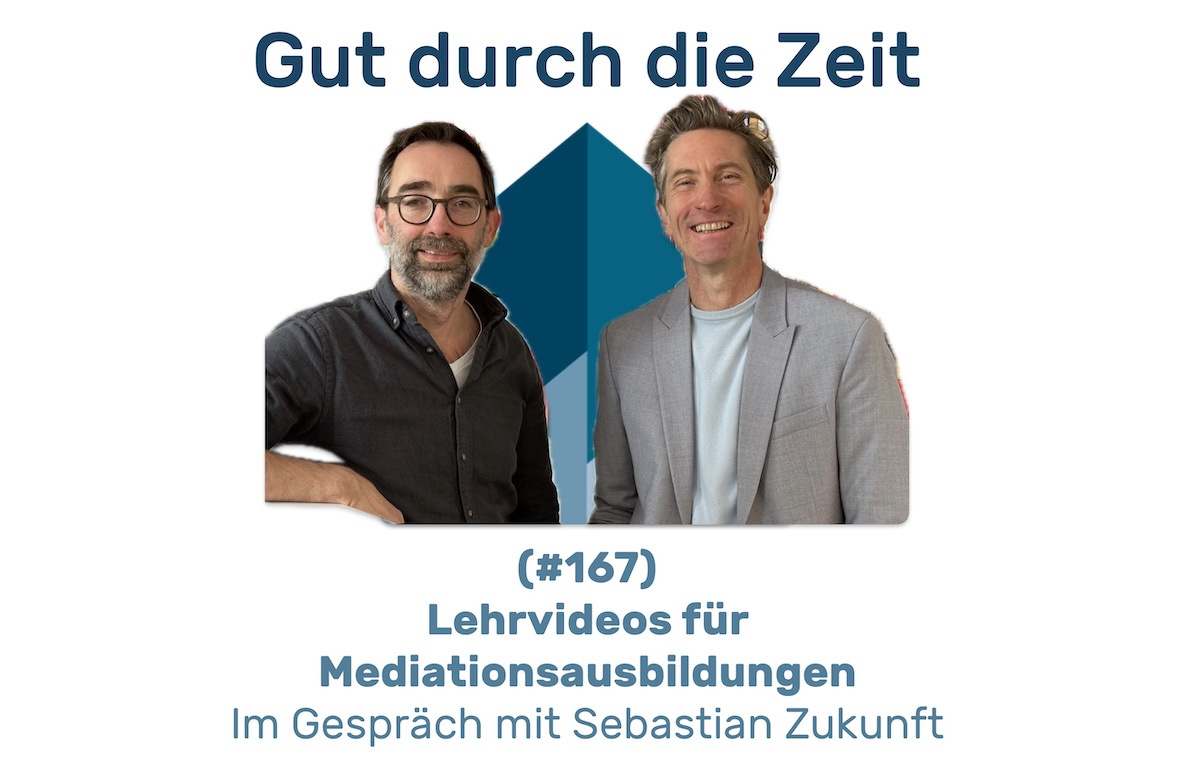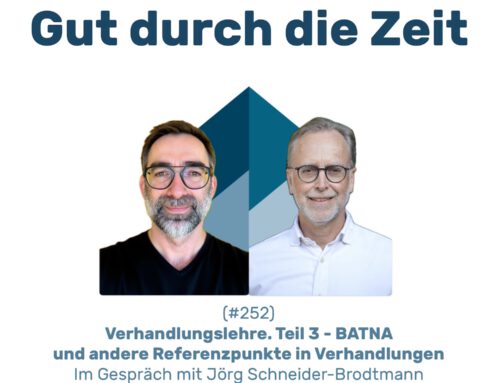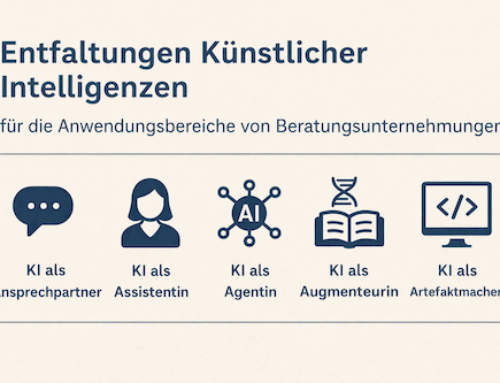INKOVEMA Podcast „Well through time“
#167 – Teaching videos for mediation training courses
What can training videos achieve in mediation training programmes? In conversation with Sebastian Zukunft
Well through time. The podcast about mediation, conflict coaching and organisational consulting.
Sebastian Zukunftlawyer, mediator and trainer for the German Mediation Association, based in Berlin.
Contents:
Sebastian Zukunft has elaborately filmed a (mock) mediation to provide teaching material for his and other training courses. The film provides an in-depth insight into how Sebastian conducts mediations and mediates in conflict situations.
I spoke to him about his motivation and the reason for this film and the possibilities of its use. The result was an entertaining conversation between fellow trainers, who also talked about the possible effects for potential mediants.
Together with a – still in-house mediation AI, a so-called mediation simulator – I have Advantages and disadvantages of this teaching method compiled. What do you think? Write it in the comments.
Advantages:
- VividnessTeaching videos make it possible to visualise complex mediation processes and techniques, which improves understanding and memory of the learning content.
- Flexibility in learning: The training candidates can watch the videos at any time and place, which enables flexible integration into the individual learning routine.
- RepeatabilityDifficult content can be better internalised by repeatedly watching the videos. This promotes a deeper understanding of mediation techniques and principles.
- Communication of non-verbal signalsVideos can show non-verbal communication and dynamics between conflicting parties that are difficult to convey in written materials or lectures.
- Diversity of conflict scenariosInstructional videos can cover a wide range of conflict scenarios, preparing trainees for a variety of real-life situations. Disadvantages:
Disadvantages:
- Lack of interactivityIn contrast to practical exercises, videos do not offer the opportunity for direct intervention and interaction, which is essential for learning mediation techniques. On the other hand, a video can be the first step.
- One-sided perspectiveVideos often only show one perspective on mediation and leave little room for critical reflection or consideration of alternative approaches. However, they can be a good introduction to a critical discussion. Here it is important to ensure that the video is used as an opportunity for reflection and profiling your own style.
- Communication of standard solutions because what is observed is overratedThe danger is that training candidates become too fixated on the solutions shown in the video and do not learn to react flexibly to the dynamics of a conflict.





Leave A Comment